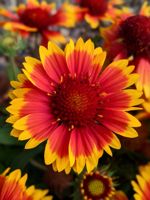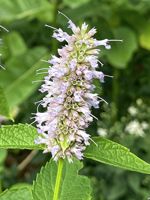Mon-Fri 9am - 5pm Mountain time
Common Gaillardia vs Anise Hyssop
Gaillardia aristata
Agastache foeniculum
NOT AVAILABLE THIS SEASON - MIGHT RETURN
NOT AVAILABLE THIS SEASON - MIGHT RETURN
Common Gaillardia is a native perennial wildflower known for its vibrant, daisy-like blooms. Flower petals vary in color from two-tone blooms with an orange-red center and yellow tips to solid yellow. Blooming from early summer to fall, it provides continuous color while attracting bees, butterflies, and other pollinators. The seeds also serve as a food source for birds, adding to its ecological value.
Common Gaillardia is easy to grow and can tolerate heat and drought. If flowering slows in the summer heat, cutting back the plant can encourage a new round of blooms in the fall. It is ideal for pollinator gardens, xeriscaping, naturalization projects, and ornamental plantings.
Anise Hyssop is a native perennial wildflower known for its fragrant spikes of small purple flowers. This plant is an excellent source of nectar and is highly attractive to a variety of bees and other pollinators. Deadheading spent flowers will encourage more blooms throughout the season.
Its aromatic leaves release an anise-like (licorice) scent when crushed. Both the leaves and seeds are edible and have been used in teas and as flavouring. Leaves can be harvested at any time, though the oil content is highest just past full bloom. Deer tend to avoid Anise Hyssop because of its strong-smelling leaves. This makes it a useful plant for positioning as a protective border around more vulnerable species.
Anise Hyssop spreads by seeds and rhizomes, but is less aggressive than other members of the mint family and is easy to remove if needed. Historically, it was planted in large numbers as a honey plant to support apiaries. Birds also feed on its seeds, adding to its ecological value.

